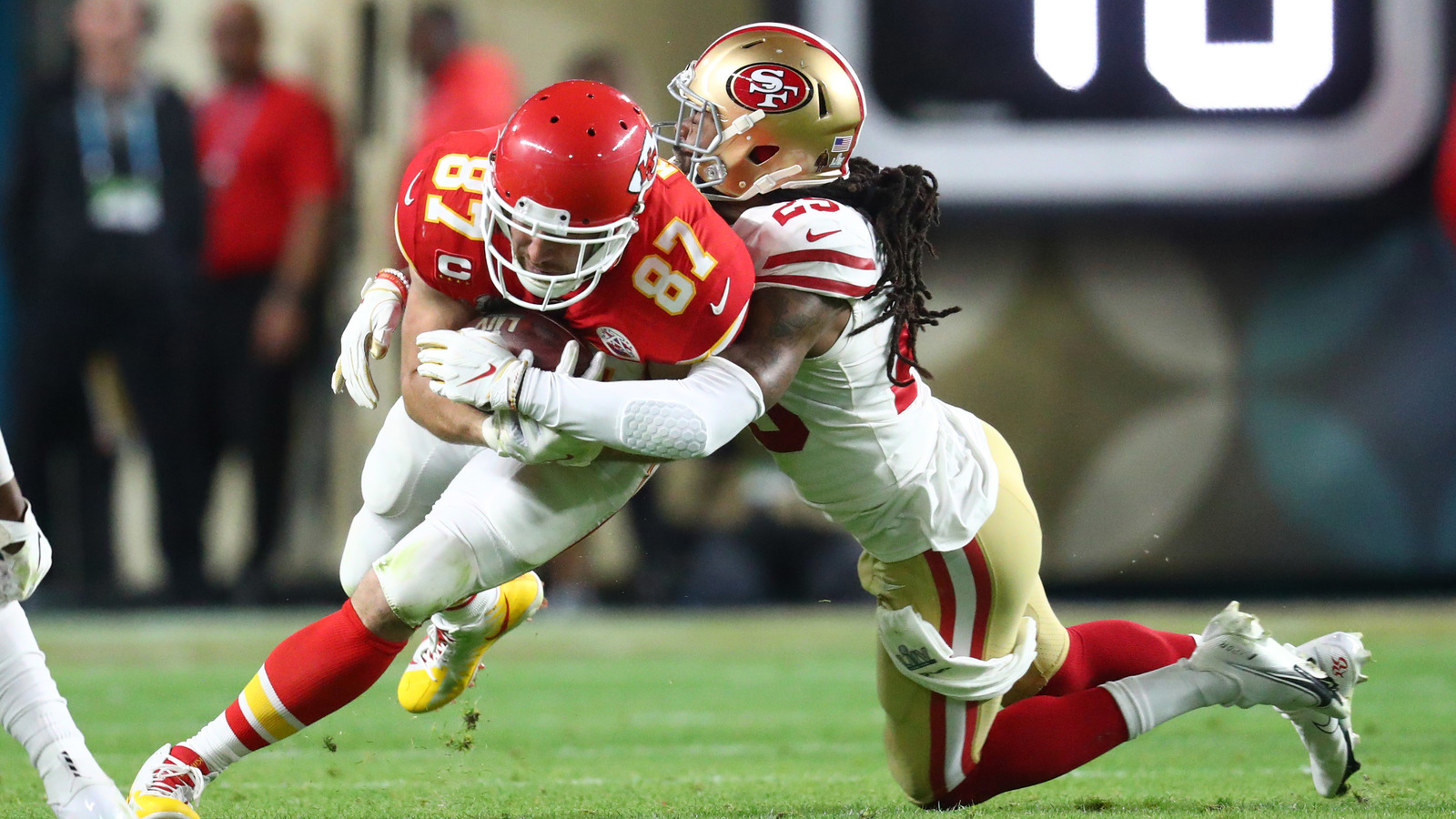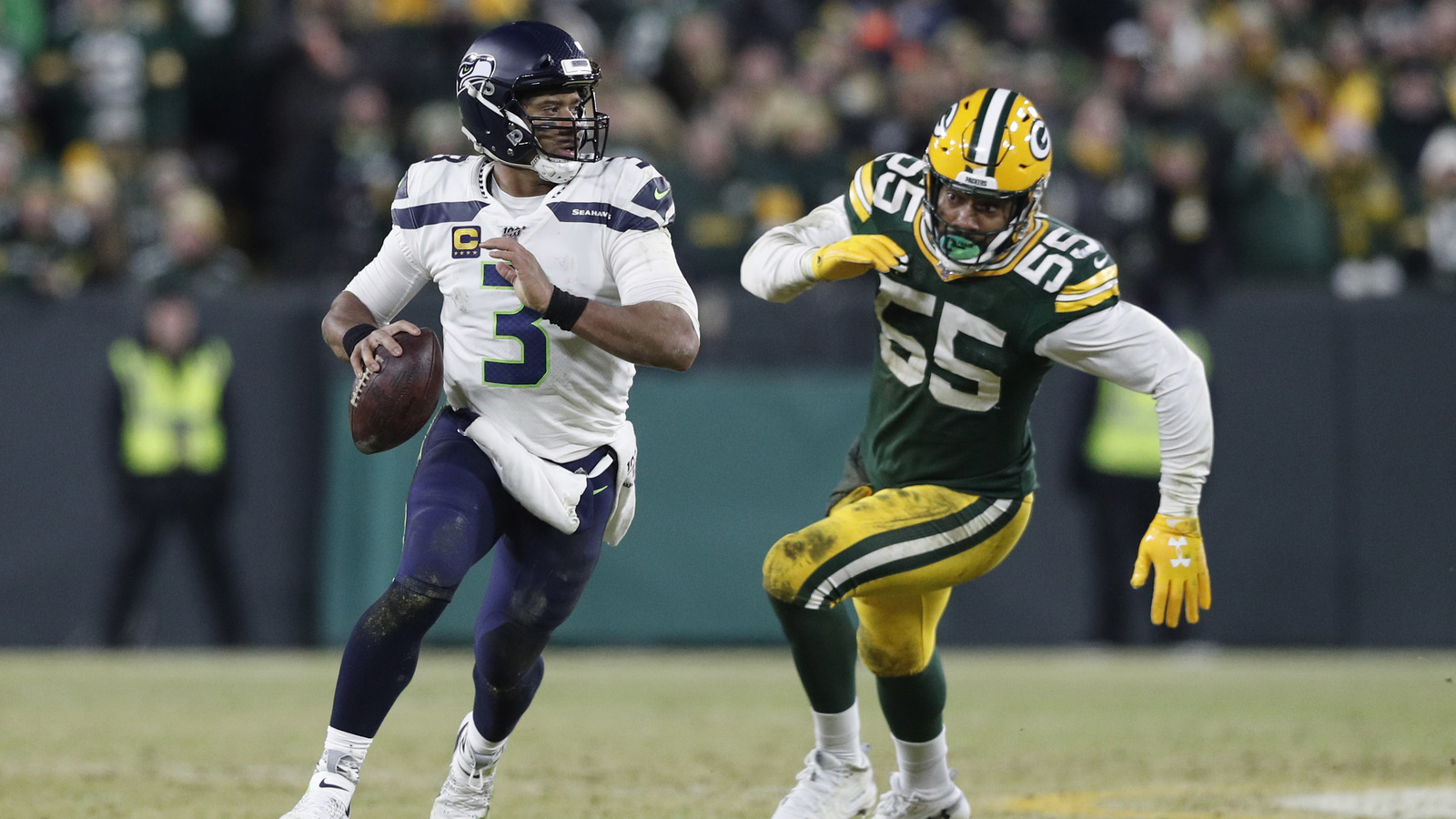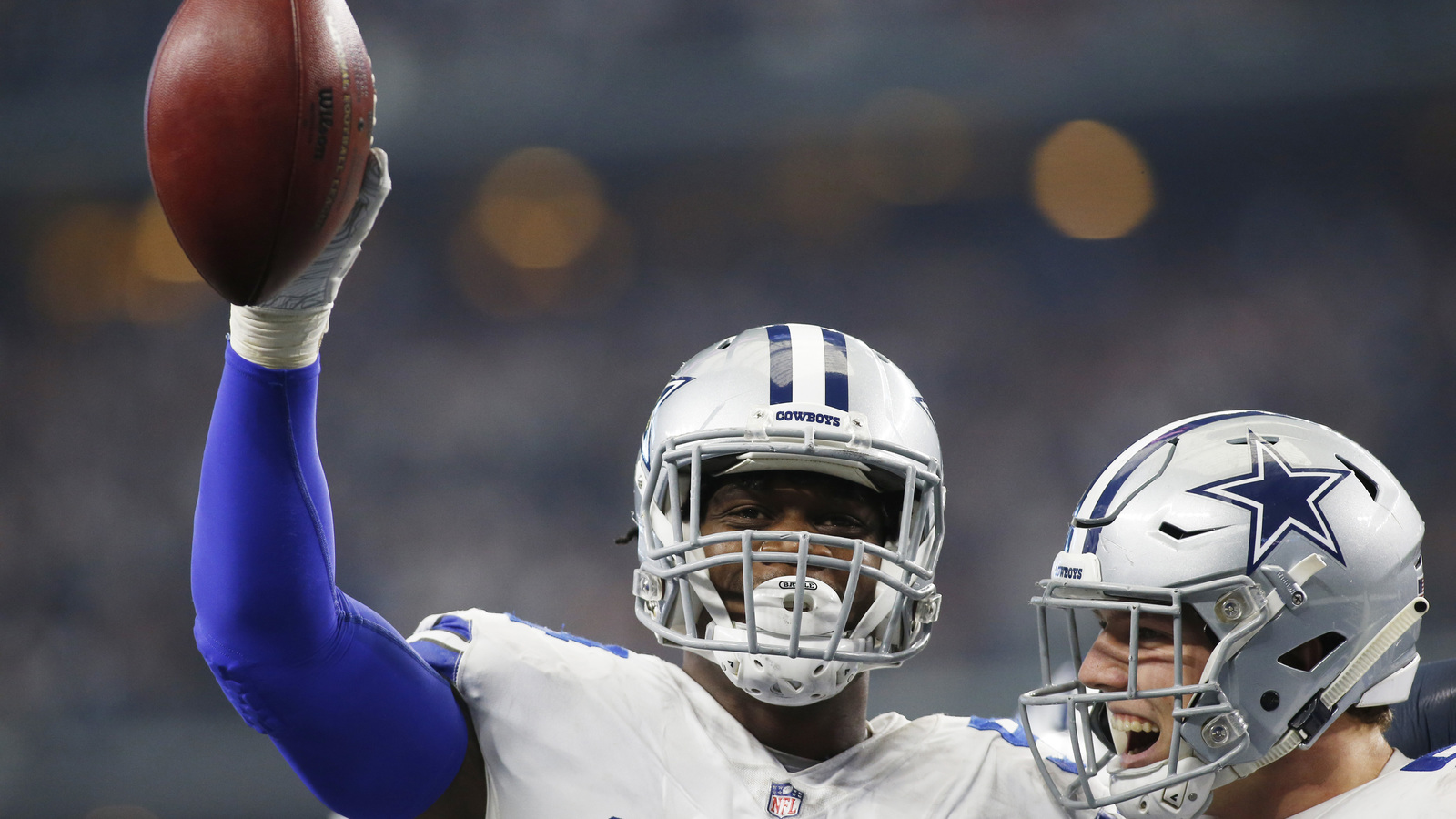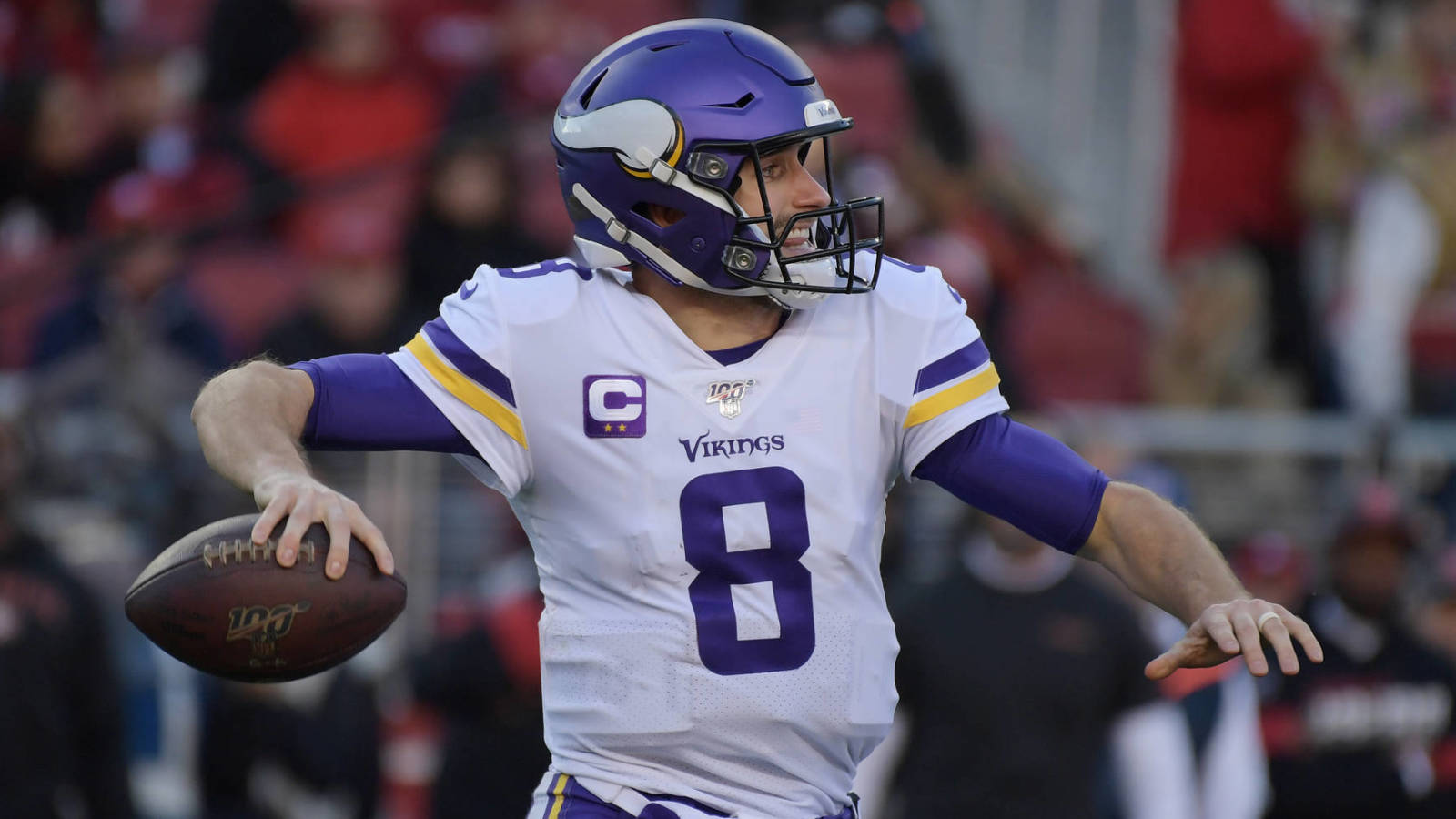
How Gronk trade to Bucs affects NFC balance of power
With Tom Brady at quarterback and the addition of tight end Rob Gronkowski via Tuesday's trade with New England, the Bucs are clearly a threat in the deep NFC.
Assuming the league can figure how to stage a season amid the coronavirus cloud, the 2020 NFC Super Bowl race promises to be one of the most fascinating in recent NFL history. Four no-doubt Hall of Fame quarterbacks (Brady, Drew Brees, Aaron Rodgers, Russell Wilson) are now in the conference, and a few other teams will enter the draft with Super Bowl aspirations.
Here is how the NFC hierarchy looks going into the draft.
1. New Orleans Saints; needs: LB, CB, WR
While the Saints re-signed Drew Brees, their defining task will be replacing him as soon as 2021. But in 2020, this is the NFC’s best roster. The Saints miscalculated their need at No. 2 wide receiver for two years. That position should no longer be an issue thanks to Emmanuel Sanders’ two-year, $16 million deal. Sanders made a notable impact on the 49ers’ offense last season and, judging by the work he did in less potent Broncos attacks post-Peyton Manning, should work well as Michael Thomas’ wingman in 2020.
The Saints' reunion with Malcolm Jenkins has them stacked at safety, but they will go into the draft needing help at linebacker and cornerback. Linebacker Demario Davis is 31, running mate Kiko Alonso tore his ACL in January and three-year starter A.J. Klein signed with the Bills. Perhaps counting on Janoris Jenkins to be a starter, the Saints could use a cost-controlled corner in their pipeline. Corner Marshon Lattimore will likely be on a top-market contract in 2021.
Brees is now 41, but he rated third in 2019 QBR and nearly broke his completion percentage record again. And it’s likely Sean Payton and Co. will dive into this draft’s deep wide receiver reservoir to add another weapon for Brees now and potentially Taysom Hill (or a to-be-determined quarterback successor) later. The Saints remain in excellent shape as one of the league’s highest-floor teams.

2. San Francisco 49ers; needs: WR, DT, CB
Other than tight end George Kittle, DeForest Buckner was the 49ers’ most reliable player. The fifth-year defensive tackle is now a Colt, bringing back this year’s No. 13 overall pick in that high-profile trade. With the 49ers having dealt their second-, third- and fourth-round selections, it’s a safe bet GM John Lynch and head coach Kyle Shanahan will opt to move down at least once in Round 1 to accumulate more draft ammo. But San Francisco’s roster remains one of the NFL’s best.
The 49ers return their entire offensive line and used potential Buckner extension money to re-sign safety Jimmie Ward and versatile defensive lineman Arik Armstead. Still, the team must identify multiple starter-level talents this weekend.
San Francisco has intriguing 2019 third-round wideout Jalen Hurd and slot receiver Trent Taylor due back from injury, but WR Deebo Samuel needs at least one more complement. A top-five interior defender, Buckner leaves a void on the 49ers’ D-line. More will be asked of former No. 3 overall pick Solomon Thomas -– an underwhelming performer in a contract year -– but the 49ers will certainly consider another D-tackle to replace Buckner. Richard Sherman will be 32 this year, so cornerback represents an area the 49ers must bolster as well.
3. Green Bay Packers; needs: WR, TE, LB
Aaron Rodgers' assimilation into new coach Matt LaFleur’s system was at times rocky, but despite the Packers failing him on the weapon front, they still made the NFC title game. However, wideout Davante Adams was the only Packer with more than 500-plus-yards receiving in 2019 -- the first time that occurred in Green Bay since 1977. The Packers also misfired in signing tight end Jimmy Graham in 2018. With Graham gone to the Bears and only middling receiver Devin Funchess added, the Packers must address their pass-catching corps multiple times in this draft. Adams, who had 997 yards receiving last season, remains Rodgers' only reliable target.
Green Bay turned to street free agents Ricky Wagner and Christian Kirksey to replace departing right tackle Bryan Bulaga and linebacker Blake Martinez, the NFL’s leading tackler over the past three seasons. The team could use help up the middle, after a season in which it ranked 23rd in run-defense DVOA, and some insurance for Kirksey (23 missed games since 2018).
It would be foolish for the Packers to impede their current quarterback –- whose prime doubles as their championship window -– by using an early pick on his potential replacement. Rodgers is signed through 2023. The Packers’ refusal to spend to supplement Rodgers in the past likely cost them at least one more Super Bowl berth. Now that they employ an aggressive GM in Brian Gutekunst, this is no time to back off in stockpiling talent to help Rodgers reach his second Super Bowl.
4. Tampa Bay Buccaneers; needs: OL, RB, DB
The Bucs adding Brady and Gronkowski rockets them from non-factor to at worst a second-tier contender. Brady’s struggles last season could be attributed to a lack of weaponry. Going from the 2019 Patriots to a team with a potentially well-rested Gronkowski and Pro Bowl wideouts Mike Evans and Chris Godwin represents an astounding improvement. Brady, however, is leaving the Josh McDaniels system in which he thrived for years and doing so in an offseason that will feature no work with teammates.
Although Gronk-Evans-Godwin sounds like a terrifying assignment for defenses, Brady cannot be considered a sure thing anymore. Post-Gronk pass-catcher issues aside, some of Brady’s downward trend was surely age-related. His 17th-place QBR ranking was a career-low figure. The Buccaneers are betting the house on Brady, who will be 43 on August 3.
The Bucs are fortifying their roster, however, having brought back front-seven bastions Jason Pierre-Paul, Ndamukong Suh and new franchise season sack record holder Shaq Barrett. Tampa Bay retained core members of a sneaky-equipped defense (DVOA ranking: fifth) that would have made more noise in 2019 had Jameis Winston not thrown 30 interceptions.
Interior offensive line talent is a must around Brady; those Bucs cogs graded well last season. Tampa Bay must replace 11-year right tackle Demar Dotson and will be armed to take a pass-catching running back early in the draft to give Brady his Shane Vereen/James White equivalent. Pro Football Focus graded no Bucs safety in its top 60 last season. That should be an ancillary area to address this week.

5. Seattle Seahawks; needs: DE, OL
The top of Seattle’s roster is better than Tampa Bay’s; QB Russell Wilson and fellow future Hall of Famer Bobby Wagner at linebacker are elite players at their apexes. This is one of the most reliably competitive teams, but the Seahawks sure enjoy testing their stars. A year after dismantling their Super Bowl defense, the Seahawks traded Frank Clark and ranked 29th with 28 sacks. Seattle’s offensive line graded 24th in Football Outsiders’ adjusted sack rate in 2019. The team has not fully addressed these issues.
The Seahawks re-signed defensive tackle Jarran Reed, who registered 10.5 sacks and 24 QB hits in 2018 before a suspension-marred 2019. But they still need help at offensive tackle, with longtime right tackle Germain Ifedi a free agent and left tackle Duane Brown nearly 35, and must find a way to land a sack artist.
This would be a team to monitor in a tag-and-trade deal for disgruntled Jaguars defensive end Yannick Ngakoue. The Seahawks pulled this off last year with Jadeveon Clowney, whose injury history has kept him in free agency and on Seattle’s radar. Even as the Seahawks enter the draft desperate for line aid, it’s difficult to envision them not contending in 2020.
6. Philadelphia Eagles; needs: WR, CB, LB
Considering the skeleton-crew wide receiver group the Eagles were forced to use down the stretch last season, Carson Wentz’s 27-7 TD-INT ratio and 11th-place QBR placement were quite an accomplishment. Carrying the albatross contracts of Alshon Jeffery and DeSean Jackson, the Eagles predictably resisted an expensive free-agent wide receiver. They may need more than one wideout in this draft. It’s a good draft to have such a deficiency.
The Eagles paid up for cornerback Darius Slay, the former Lion, and, oddly, ex-Steelers nose tackle Javon Hargrave. Should Malik Jackson stay healthy after missing all of last season, the Eagles boast a comically deep (and expensive) defensive tackle group -- with perennial Pro Bowler Fletcher Cox anchoring the bunch. Even with Slay, the Eagles could use a young talent at corner. They have failed for years to identify a reliable talent here, and Slay is 29. Having cut four-year starter Nigel Bradham, the Eagles need a young linebacker as well.
Philadelphia still has one of the NFL’s best offensive lines, one that will pass the baton from Jason Peters to 2019 first-rounder Andre Dillard at left tackle. Ace GM Howie Roseman faring well in this draft could move Philly up the NFC hierarchy.

7. Dallas Cowboys; needs: CB, DE, C
After four years of Dak Prescott on a fourth-round contract, the bill came due. Considering the Cowboys won one playoff game when Prescott was making long snapper money, they will need to do well in this draft now that he’s attached to a $31.4M exclusive franchise tag.
Byron Jones’ free-agency defection and Travis Frederick’s retirement create obvious needs at cornerback and center, respectively. The Cowboys also are placing considerable faith in suspension mainstays Randy Gregory and Aldon Smith as pass rusher DeMarcus Lawrence’s sidekicks. Even for the Cowboys, this is extreme. Dallas re-signed Joe Looney, Frederick’s 2018 stopgap while he dealt with Gullain-Barre syndrome, at center but must land another cornerback to complement incumbents Chidobe Awuzie and Jourdan Lewis. Jones was one of the league’s best boundary corners over the past two years and will not be easy to replace.
8. Arizona Cardinals; needs: OL, CB, DL
They added WR DeAndre Hopkins, a bizarrely easy acquisition from the Texans, and ex-Lions linebacker/pass rusher Devon Kennard (14 sacks since 2018). Arizona also signed ex-Bills defensive tackle Jordan Phillips, who is either coming off a breakout season (9.5 sacks) or a contract-year outlier. Arizona is in position to make noise as a fringe contender but needs to further stock its two-deep this week.
The Cardinals allowed 50 sacks last season; QB Kyler Murray will need more time in order to fully use his Hopkins-Larry Fitzgerald-Christian Kirk arsenal. In addition to adding a three-time All-Pro to Murray’s receiving corps, the Cards convinced the Texans to take David Johnson’s $13M-per-year contract (in the Hopkins deal) and transition-tagged trade acquisition RB Kenyan Drake.
Although they re-signed left tackle D.J. Humphries and gave longtime Steelers right tackle Marcus Gilbert another shot despite his recent injuries, they could use multiple starter-caliber blockers from this draft. CB Patrick Peterson will turn 30 this year, is coming off a down season and entering a contract season. Along with their lines, cornerback will be a Cardinals need.

9. Minnesota Vikings; needs: WR, CB, DE
With the Vikings holding three picks in the draft’s first two rounds, they are likely to address some of their needs and make this ranking too low. But entering the virtual event, Minnesota’s lineup is missing a wide receiver, a defensive end and perhaps multiple cornerbacks.
After the Stefon Diggs trade to Buffalo, the Vikings are down to Adam Thielen, ex-Titans rotational cog Tajae Sharpe and scraps at receiver. They lost nearly their entire cornerback stable -– Xavier Rhodes, Trae Waynes, Mackensie Alexander -– and need to replace four-time Pro Bowl defensive end Everson Griffen.
The Vikings signed ex-Ravens defensive tackle Michael Pierce to replace Linval Joseph and are working toward a long-term deal with franchise-tagged safety Anthony Harris. But this team is a cut below the one that beat the Saints in overtime in the playoffs. The Vikings recently extended Kirk Cousins, committing to the middling quarterback through at least 2021. They need to exit this draft with quality augmentations to help justify the Cousins arrangement.
10. Los Angeles Rams; needs: LB, OL, CB
With the Rams eating north of $33M in dead money from the Todd Gurley and Brandin Cooks transactions -– and lacking a first-round pick until 2022 because of the Jalen Ramsey trade -– it is fair to question GM Les Snead’s blueprint. This looks to be a retooling year. But the Rams got little from Cooks and Gurley last year and still went 9-7. Sean McVay remains one of the NFL’s best coaches and could have his team in the postseason mix.
The Rams jettisoned LB Clay Matthews and signed ex-Bears linebacker Leonard Floyd, a former first-round pick, who played under new defensive coordinator Brandon Staley in Chicago. They swooped in to bring back defensive end Michael Brockers after his Ravens deal fell through; he has played alongside DT Aaron Donald throughout his career and will help on a depleted Rams roster. The team struggled to replace departed offensive linemen last year and must replace standout coverage linebacker Cory Littleton, who's now a Raider. Los Angeles could also use another Ramsey complementary piece at corner.
The Rams at least hold two second-round picks, somehow prying one from the Texans for Cooks' expensive contract. That's a start.
More must-reads:
- Patriots trade Rob Gronkowski to Buccaneers for fourth-round pick
- Julian Edelman's mindset following Rob Gronkowski trade
- The '100 catches in an NFL season' quiz
Breaking News
Customize Your Newsletter
 +
+
Get the latest news and rumors, customized to your favorite sports and teams. Emailed daily. Always free!

